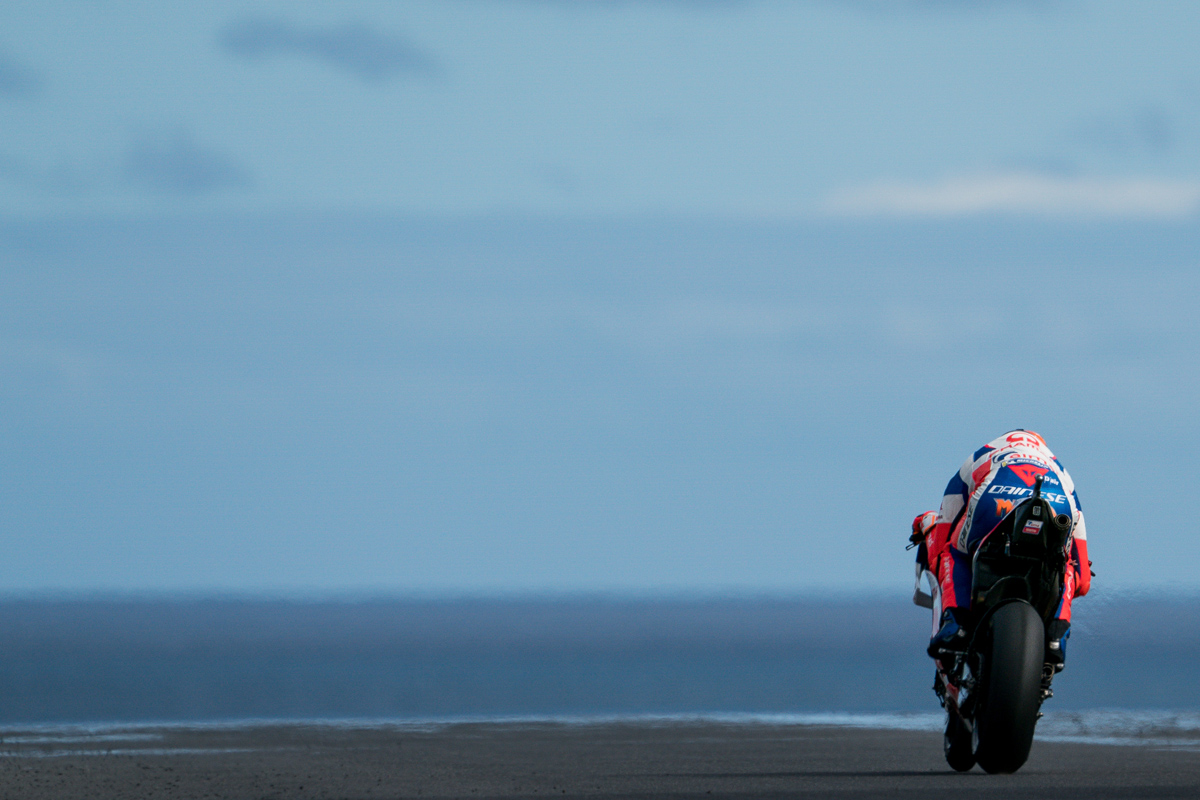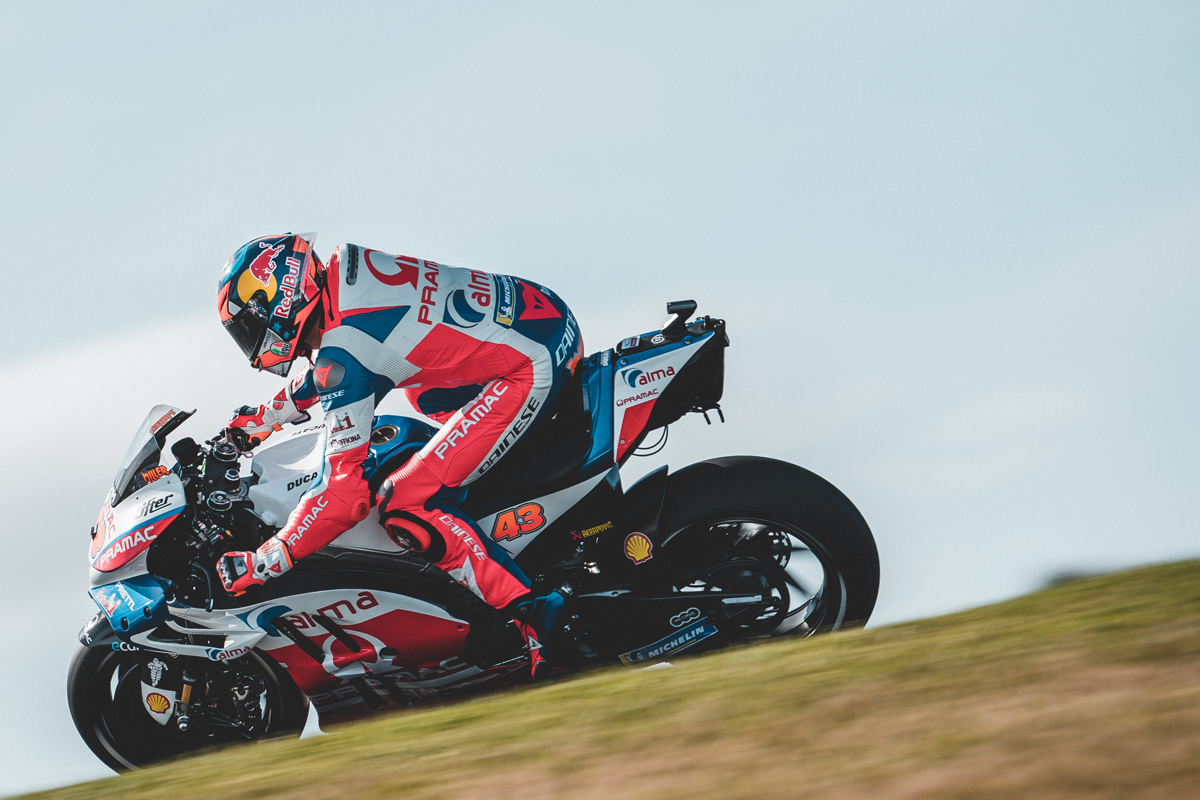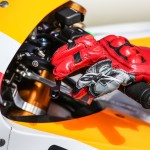Take a pinch of charming scenery, edge a little closer to the fringe of the coast, stir in a handful of oceanic views and embellish it with a fast flowing circuit. This might just be one of the greatest recipes concocted on the MotoGP calendar. Round three of the four flyaways has arrived and we are residing in the far away land of Melbourne, Australia. The flight to this location may be a long one but upon your arrival and the experience you’ll have over the weekend, it’s sure to be up there with the best. For the locals, welcome back. It is a township with deep roots connected to the motorsport world and although small in size, it has left its imprint on the masses.
This emblematic circuit is situated 140km southeast of Melbourne, Victoria. Rich in native wildlife, flora, fauna and panoramic scenery, Phillip Island has become a renowned favourite from the very beginning. On January 5th 1798, rover and mariner George Bass reached an island of rugged coastal beauty. The earliest inhabitants were the Bunurong people of the Kulin nation. They were one of five indigenous tribes in central Victoria and some of the first Aboriginal people to come in contact with European sailors.
At the beginning of the week we were graced with a member of the Bunurong tribe for the Welcome to Country ceremony in which each trophy was cleansed with smoke. The burning of traditional plants and gum leaves signified the welcoming of people to their land and most importantly paid respect to the past, present and future emerging leaders. Their presence forged the foundations of this small island that we now visit for the annual Australian Motorcycle Grand Prix. As you wander around the surrounding towns it becomes clear how quaint this place is. Quirky cafes flooded with the aroma of freshly ground coffee are wedged into every nook and cranny and restaurants feel like a multicultural celebration. 97km of coastline borders this location and the copious beaches reinforce the stereotypical surf culture that Australians are well known for. As you walk around the bustling streets, this environment is juxtaposed against acres of dry bushland. Native Australian animals like kangaroos, echidnas and koalas roam around freely and have made an appearance at the circuit more than once.

In 1928 the motorsport seed was planted. A 100 Mile Road Race event utilising a high speed rectangle formation of public roads was cultivated. The first Australian Grand Prix was born and became the grounds for motor racing through to 1935 where it wistfully ceased to function. However, in 1951 a historical assemblage between six local businessmen saw the conversation of motor racing in Phillip Island reignited. In 1952 plans for a permanent circuit were drawn out and the formation of the ‘Phillip Island Auto Racing Club’ was secured with one mission: to build Australia’s first international Grand Prix circuit. Despite its decline in the 60’s, Len Lukey an exhaust manufacturer and accomplished ex racer purchased and invested money to develop a circuit fit for the job. Unfortunately once again in the midst of a golden era for the venue, issues of safety arose and in 1985 the track was sold to ‘Placetac Pty Ltd’ purely for farming purposes. After much deliberation with family and investors it was agreed that the potential to refurbish an elite international circuit outweighed the farming prospects. Preparation to stage the 1989 Grand Prix would begin and not only would it become one of the most highly regarded of its kind it would allow the likes of Wayne Gardner and Mick Doohan to blossom. This track welcomed touring cars and visitors from the V8 supercar and MotoGP world and continued to honour Len Lukey’s legacy through the stunning ‘Lukey Heights’ corner even among its exceedingly turbulent lifespan.
Blessed with organic scenery, oceanic views and fast fluidity, in the modern era this circuit is ranked as one of the best. Valentino Rossi is among the riders who speak highly of it: “Phillip Island is one of the best circuits on the calendar. It is really different, it is the only one like this”. But the Italian also equally shares his constructive criticism in regards to the native spring schedule that the Australian Grand Prix Corporation traditionally set for the MotoGP fixture. According to Rossi, who spoke to the press on Friday evening at ‘PI’, “we fight all year, I think in every safety commission meeting all the riders ask the organisation through Dorna to modify the time to come back to [a race time] of 2 o’clock and they always say no”. It is an on-going battle between the riders and the organisers with the F1 Championship in Melbourne clashing with the popular suggestion of a March GP where temperatures would be higher and the climate more stable. “We push very much to come to PI in the right moment: March. So we start the season here but they say it is impossible because they have F1 in Melbourne”. We wonder with all the suggestions being passed around and the constant unpredictability of the weather; will the AGPC eventually have no choice but to listen?

Timing and changing skies aside, Phillip Island has become a platform for Australians such as Gardner, Doohan, Troy Bayliss, Casey Stoner and Jack Miller and a breeding ground for epic narratives. In 2003 after overtaking under the yellow flag, Valentino Rossi received a 10 second penalty to add to his World Championship stresses. In defiance of this reprimand Rossi went on to enlarge a sufficient race-winning margin and put the cherry on top of his World Championship sundae. Something that only the best of the best can achieve. In 2015 we witnessed a tale between rivals. Four riders, three different manufactures all fighting to take victory. Overtakes took place left, right and centre and we even saw a seagull (a common sight) flash before our eyes. Marc Marquez, Jorge Lorenzo, Andrea Iannone and Rossi were the stars starred in an authentic battle and in the end Marquez clinched the victory. The best thing about Phillip Island is that you never know who is going to win but you know it’s going to be a good race.
Taking a stroll along the 4.4km circuit you wouldn’t know its tempestuous history. It feels like it has and always will be apart of the MotoGP calendar. The smooth, long corners, coastal breezes and up and down nature make it one of the most charming of its kind and it’s clear why so many fans, riders and teams love it. The combination of the place, the people, the circuit, the animals, the sun and even the rain make it a flyaway you do not mind getting jet lag for. As an Australian I may be biased, but I’m not the only one that finds it hard not to return to this little coastal Island each year.
By Sienna Wedes @SiennaWedes
Photos by CormacGP @CormacGP








